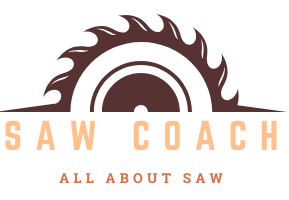Crafting the perfect table saw crosscut sled requires careful consideration of base thickness, which directly impacts performance, accuracy, and safety. Woodworkers typically choose between 1/2\” and 3/4\” thick bases, balancing weight, stability, and cut precision. The right thickness depends on material quality, intended use, and specific woodworking requirements, making it crucial to understand the nuanced factors that influence sled base design.
What Determines the Ideal Thickness for a Table Saw Crosscut Sled Base?
Selecting the right thickness for a table saw crosscut sled base involves multiple critical factors that influence overall performance and reliability. Let’s explore the key considerations that woodworkers must evaluate when determining the optimal base thickness.
Why Does Material Choice Matter?
Different materials offer unique characteristics that affect sled base performance:
| Material | Thickness | Pros | Cons |
|---|---|---|---|
| Plywood | 1/2″ – 3/4″ | Lightweight, stable | Potential for warping |
| MDF | 1/2″ – 3/4″ | Smooth surface, consistent | Heavier, moisture-sensitive |
| Hardboard | 1/4″ – 3/8″ | Thin, precise | Less rigid, requires reinforcement |
How Does Thickness Impact Cut Accuracy?
Base thickness directly influences several critical aspects of woodworking precision:
- Stability: Thicker bases (3/4″) provide enhanced rigidity
- Weight Distribution: Prevents unwanted flexing during cuts
- Alignment Consistency: Reduces potential for measurement variations
- Smooth Movement: Ensures reliable tracking in miter slots
What Are the Practical Considerations?
Woodworkers should evaluate these practical elements when choosing sled base thickness:
- Project Scale: Larger projects require more robust bases
- Cutting Frequency: High-volume workshops might prefer more durable options
- Tool Compatibility: Ensure base thickness matches table saw specifications
- Personal Comfort: Consider weight and maneuverability
Can Thickness Affect Safety?
Base thickness plays a crucial role in workshop safety:
- Reduced Kickback Risk: A stable base minimizes unexpected movement
- Consistent Cut Performance: Prevents potential binding or slipping
- Structural Integrity: Prevents warping or deformation during use
What Are Expert Recommendations?
Professional woodworkers typically recommend:
- Minimum Thickness: 1/2″ for standard woodworking projects
- Recommended Thickness: 3/4″ for enhanced stability
- Material Quality: Choose warp-resistant, flat materials
- Regular Maintenance: Check and replace base as needed
Final Thickness Selection Strategy

When determining your crosscut sled base thickness, consider:
– Your specific woodworking needs
– Available materials
– Frequency of use
– Precision requirements
Pro Tip: Always test your sled’s performance and make adjustments based on real-world results.
Potential Thickness Variations
- Lightweight projects: 1/2″ base
- Heavy-duty woodworking: 3/4″ base
- Precision instruments: Consider custom thickness
Conclusion
Selecting the right table saw crosscut sled base thickness is a nuanced decision that balances performance, safety, and personal woodworking style. While 1/2″ to 3/4″ remains the standard range, individual project requirements will ultimately guide your choice.
